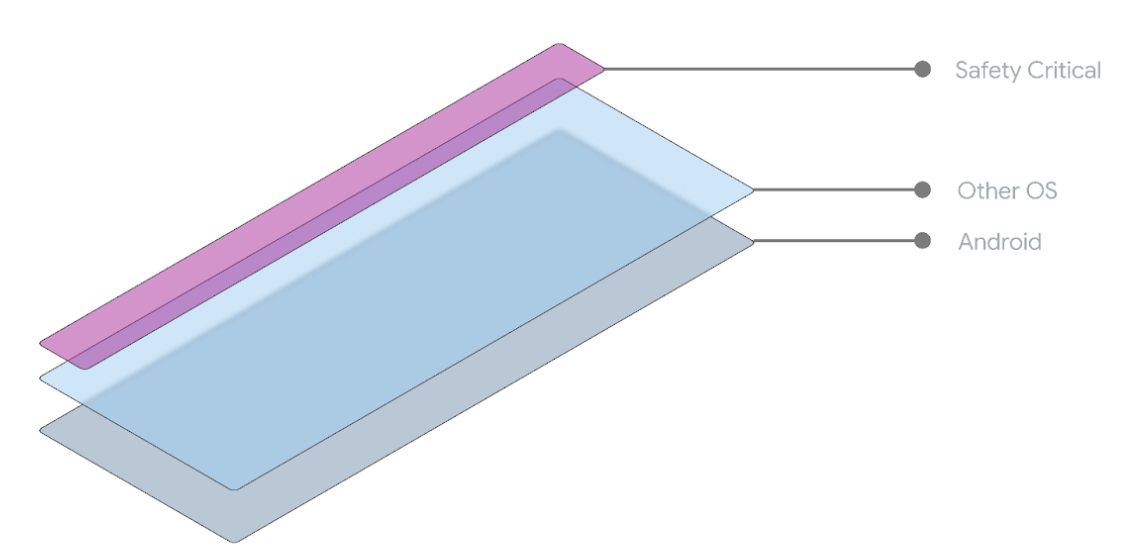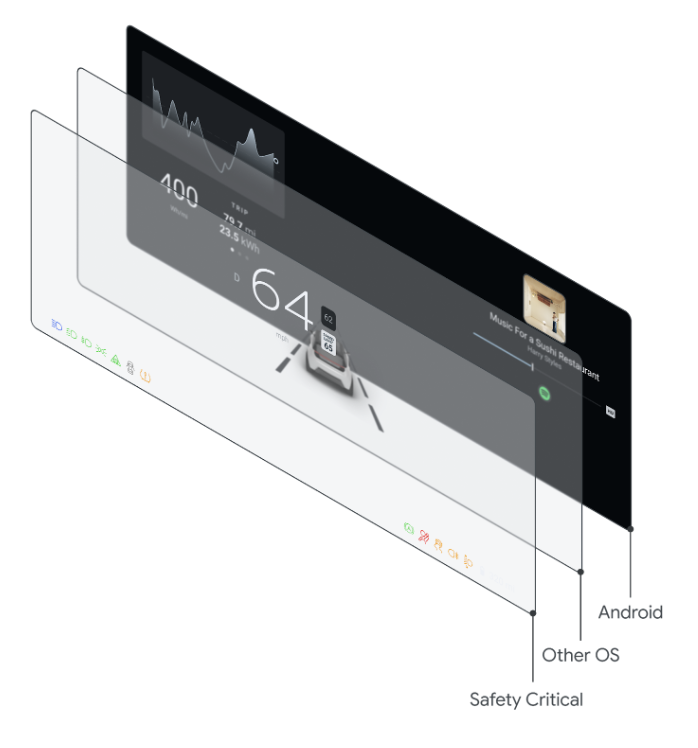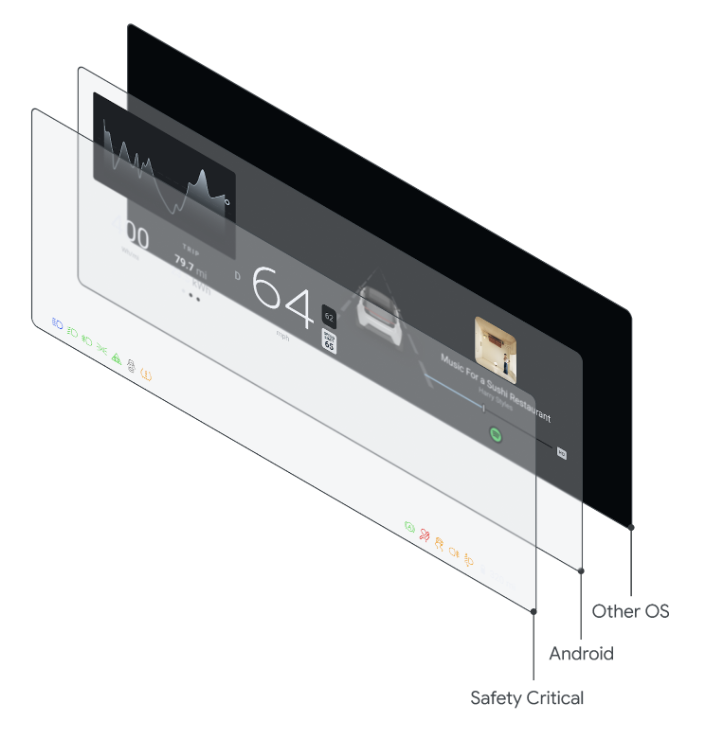ตั้งแต่วันที่ 27 มีนาคม 2025 เป็นต้นไป เราขอแนะนำให้ใช้ android-latest-release แทน aosp-main เพื่อสร้างและมีส่วนร่วมใน AOSP โปรดดูข้อมูลเพิ่มเติมที่หัวข้อการเปลี่ยนแปลงใน AOSP
เลเยอร์กระจกรถยนต์
จัดทุกอย่างให้เป็นระเบียบอยู่เสมอด้วยคอลเล็กชัน
บันทึกและจัดหมวดหมู่เนื้อหาตามค่ากำหนดของคุณ
ในการกำหนดค่าอุปกรณ์ยานยนต์ที่แสดงคอมโพเนนต์ที่สำคัญต่อความปลอดภัยในพื้นที่เดียวกันของหน้าจอเหมือนกับ Android Automotive นั้น จำเป็นอย่างยิ่งที่เลเยอร์ Android จะต้องอยู่เบื้องหลังเลเยอร์การกำกับดูแล แม้ว่าคุณจะสร้างภูมิภาคที่โปร่งใสใน Android ได้ แต่ระบบก็ไม่รองรับอย่างเป็นทางการและไม่ควรใช้ การติดตั้งใช้งานอุปกรณ์ยานยนต์ต้องไม่ซ้อน Android
Automotive OS ไว้เหนือคอมโพเนนต์ที่เกี่ยวข้องกับความปลอดภัยหรือคอมโพเนนต์ด้านกฎระเบียบ
 รูปที่ 1 เลเยอร์หน้าต่าง
รูปที่ 1 เลเยอร์หน้าต่าง
อุปกรณ์สามารถแสดงคอมโพเนนต์ที่ไม่สำคัญภายใต้ Android ได้ อย่างไรก็ตาม เราขอแนะนำให้คุณใช้ Android เป็นเลเยอร์ฐานเมื่อระบบหลายระบบแสดงผลในพื้นที่เดียวกัน

แนะนำ

ทำได้ แต่ไม่แนะนำ
ตัวอย่างเนื้อหาและโค้ดในหน้าเว็บนี้ขึ้นอยู่กับใบอนุญาตที่อธิบายไว้ในใบอนุญาตการใช้เนื้อหา Java และ OpenJDK เป็นเครื่องหมายการค้าหรือเครื่องหมายการค้าจดทะเบียนของ Oracle และ/หรือบริษัทในเครือ
อัปเดตล่าสุด 2025-12-03 UTC
[[["เข้าใจง่าย","easyToUnderstand","thumb-up"],["แก้ปัญหาของฉันได้","solvedMyProblem","thumb-up"],["อื่นๆ","otherUp","thumb-up"]],[["ไม่มีข้อมูลที่ฉันต้องการ","missingTheInformationINeed","thumb-down"],["ซับซ้อนเกินไป/มีหลายขั้นตอนมากเกินไป","tooComplicatedTooManySteps","thumb-down"],["ล้าสมัย","outOfDate","thumb-down"],["ปัญหาเกี่ยวกับการแปล","translationIssue","thumb-down"],["ตัวอย่าง/ปัญหาเกี่ยวกับโค้ด","samplesCodeIssue","thumb-down"],["อื่นๆ","otherDown","thumb-down"]],["อัปเดตล่าสุด 2025-12-03 UTC"],[],[]]




